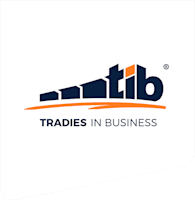What if you could stop discounting your price and instead increase the value you offer to get more customers buying from you?
Here’s 3 simple ways you can increase the value customers perceive in your product or service and get more of them buying from you.
These three ideas will help you to actually make more sales without dropping your price and giving away your margin, but at the same time, actually giving your customers great value. Which is what we all want to do as business owners, to actually give people great value and a great experience, and have them go away feeling good about the purchase that they’ve made and hopefully tell their friends about it!
So, here’s a few examples.
Number 1 – Giveaways. What? Give free stuff away? We want to give away something that has low cost to us as the business but a high perceived value in the eyes of your prospective customer. Let’s look at a mower shop as an example. If I buy a mower from you (you’re the mower shop owner) and you give me a fuel can and some ear muffs and a cap and maybe some safety glasses, what do I, as a prospective customer, look at? Your cost price as the business owner or the retail price of those items when I think about what they’re worth?
Well, generally speaking, it’s the retail price, so as a consumer, I’m not totally certain what things cost. Sure, people are more educated consumers these daysbut you’d be amazed how many people don’t actually know how much a fuel can costs a mower shop to buy from their supplier. So you could potentially package up a fuel can and some safety gear, and give away maybe 60, 70, or 80 dollars worth of value to me as a consumer, and it might only cost you 20 or 30 dollars as the business owner!
That way you’re giving something away but rather than give an $80 discount on a mower and give away potentially your whole margin you’re giving the perception of that much in value with goods that have cost you less than that. So, in your business look for things that have a high perceived value that maybe cost you less than that to buy and use them as giveaways or free add-ons to convert sales instead of discounting.
Number 2 – Package deals. Package deals are a great way to increase value in the mind of a prospect or of a customer without it costing you the same as a discount.
[A note about discounts: When you give me a 10% discount, you’re giving me 10% of the retail price of that product. Now, if you’re only making a typical 15 or 20% net margin on your products how much of your profit have you given me? Well, you’ve given me two thirds of your profit. So, it’s going to get hard for you to sustain that sort of a business]
If you package up a core item that you sell, like the mower, with some other peripheral products that have a low cost and a high perceived value, you could end up increasing your overall sales dollar value while still leaving me feeling like I’ve got great value as the consumer. Instead of me buying the mower for say $399, if I get the mower and everything else for $459, in my mind as the consumer I’m getting almost $500 worth of products for only $459.
Number 3 – Problems vs Products. I talk to lots of business owners that are very passionate about their product or service. They know lots about it, they know that it’s going to help me and they can tell me exactly how it’s going to help me and make my life better. That’s all great and certainly very important. The thing is, I don’t buy your product or your service. What I buy is a solution to my problem. So it makes sense that you should talk about my problems and how your solution will solve it, rather than features and benefits alone. I’m then much more likely to buy the solution from you than your competitor who might simply be selling me features. More money gets spent on pharmaceuticals every year than vitamins and other supplements – people want cures, not prevention!
If you want to find out more about this last strategy, I’ll be blogging about it soon and digging into it a little more deeply. For now, have fun with some giveaways and package deals, and as always, keep going outside your comfort zone!
Warrick
P.S. In 2010 Americans spent a little over $11 billion on vitamin and mineral supplements. Compare that to the $307 billion spent on pharmaceuticals…

